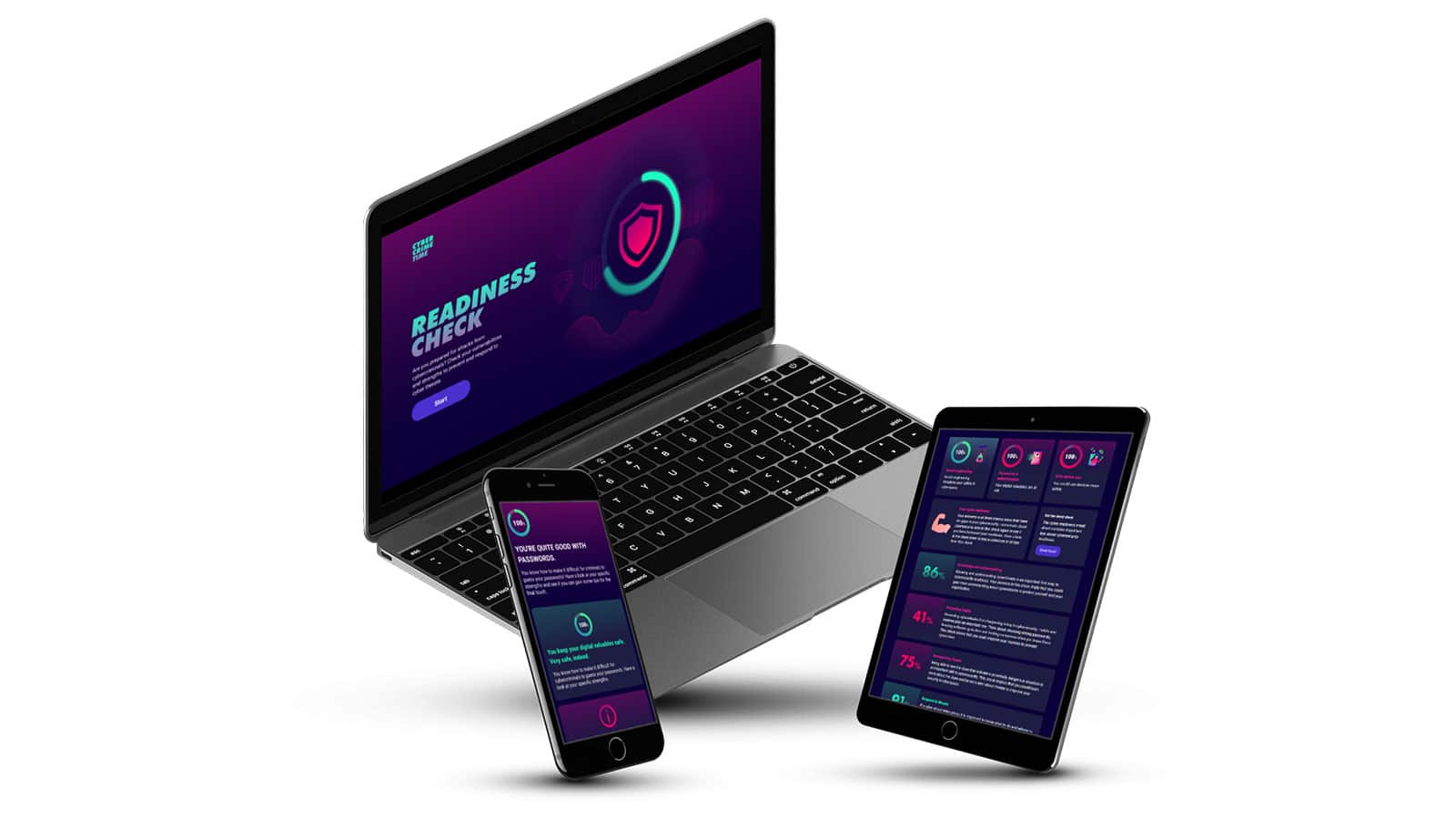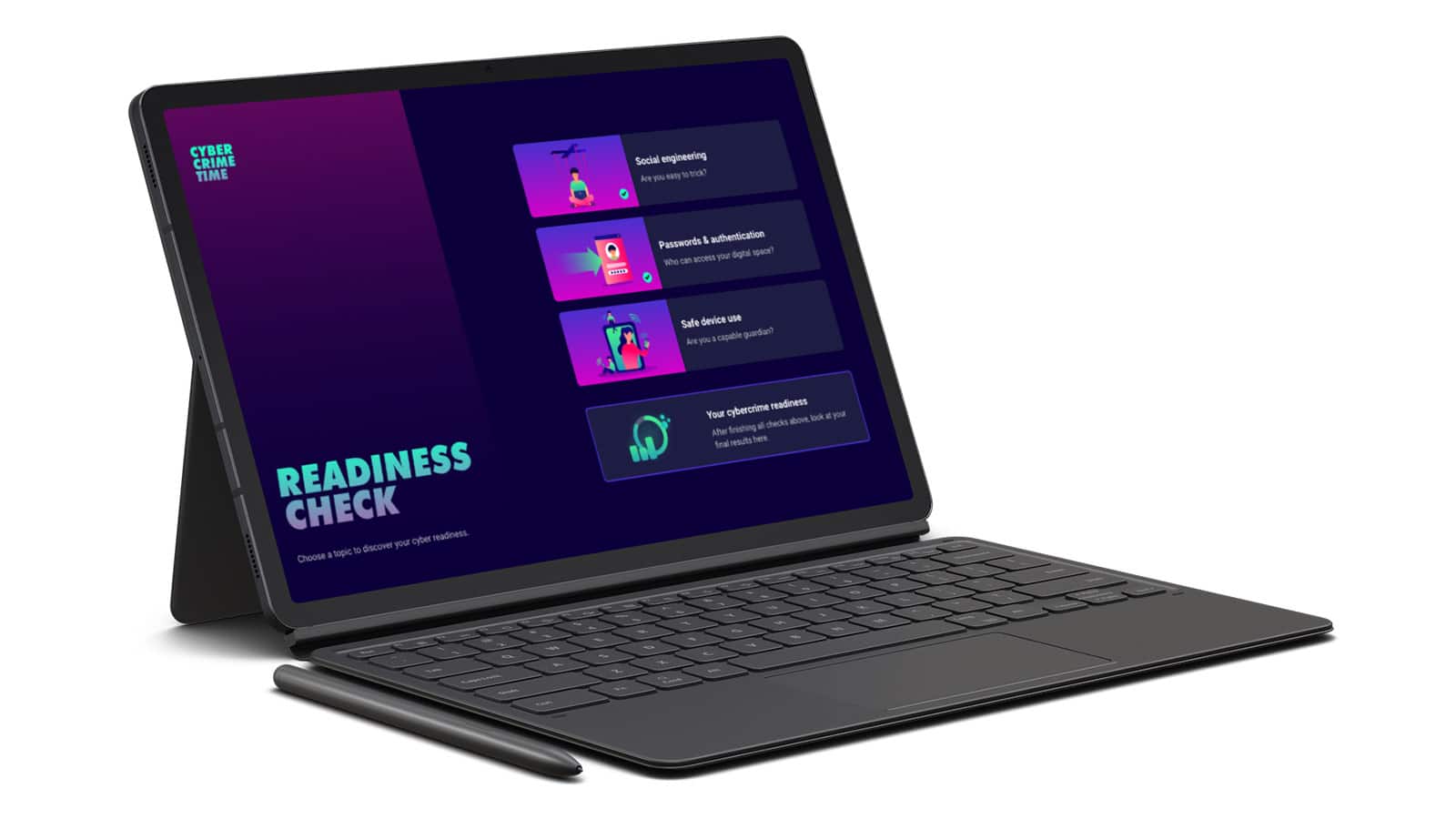
Navigating Change: the Importance of Future Skills
Strategic skills development for companies and individuals in a dynamic working world
What skills does a company need in order to remain successful and improve its ability to respond effectively in a constantly changing world? If we could answer this question with a definitive list, the discussion surrounding “future skills” would be very short.
But, alas, it’s not that simple. There is no universally definitive answer. We can, at most speak only in approximate terms. And therein lies the challenge.
The world of work is in constant flux, shaped by technological advances, changing expectations and ever-new business models. Faced with this highly dynamic and uncertain environment, companies need to get future-ready to ensure they remain successful. And central to this are future skills. These are skills that employees and teams require in order to remain actively in control in a constantly changing world. Our experts advise companies and organisations on how to approach this complex topic.

Uwe Hofschröer, Head of Learning Strategy Consulting at imc
Uwe Hofschröer and his team advise companies at the strategic level on learning objectives, learning formats, and learning content. “There are two layers of uncertainty on this subject,” he says. “Firstly, future skills are, by definition, dynamic. They relate to something that won’t become relevant until some point in the future. And secondly, they describe ‘supra-disciplinary skills’ that don’t relate to any current tasks or challenges affecting employees right now. But that’s not a reason not to engage with the subject.”
Self-directed learning and self-organised learning processes
Companies must take care not to confine their focus on future skills purely to the strategic level. They must follow the matter through to the individual level,
because skills are something developed by and in individual employees. Hence, the focus is on the individual’s ability to successfully navigate change. And that’s something that can be acquired only through overcoming real challenges.
Setting employees “future skills” as a learning task and providing them resources is not enough.
This is especially so since “future skills” transcend subject expertise. They are about enabling employees to navigate new, previously unknown challenges with confidence. They include communication skills, teamwork, critical thinking, and problem-solving skills. They also involve leadership in uncertain situations and the ability to engage successfully with new technologies.
To ensure employees can navigate future challenges in a self-directed manner, the learning process itself should instill self-organised learning as a core value.
Self-organised learning processes do, however, require a clear framework and must be aligned with the company’s strategy, objectives, and challenges. As Hofschröer explains: “In our experience, dealing effectively with the uncertainties surrounding future skills requires an interplay between the ‘company’ level and the ‘individual’ level.” In his view, there are three core aspects to this:

Defining goals and visions based on the company’s own corporate strategy, on market analyses, and on the specific environment in which the company operates. The key is not to treat future skills as a one-off, top-down project but to give employees an active role.

Reflection and operationalisation: Teams and leadership personnel have a key role to play in the development of future skills. Why? Because they are in a position to articulate the challenges in their work clearly and in detail. How? By organising learning processes to deal with their specific challenges. The company can support them with workshops on learning potential, coaching programmes, or training in methodologies like action mapping.

Building up capacity and integrating future skills into learning offerings: A one-off, standardised solution won’t do, because skills are acquired by individuals and are therefore highly dynamic. The company therefore needs to enable skill development in an integrated manner – in various learning environments and at different levels. This allows employees to develop skills in a way that matches their specific needs and learning situations.
Learning strategies and awareness campaigns as key components
The starting point should be a comprehensive awareness campaign. The aim here is to communicate the importance of future skills and strengthen the strategic framework for their development. It’s vital to get the team leaders on board here. It’s important to recruit them as multipliers and give them the tools they need to foster future skills in their teams.
At the learning strategy level, companies can define targeted formats and methods that integrate future skills into existing and new learning programmes. The formats and methods should foster self-organised learning, data literacy, creative problem solving, and social cooperation. This can, for example, be achieved in product training courses and onboarding programmes by using group work and projects.
The results are blended learning scenarios that promote self-directed learning and employee collaboration. This involves providing clear guidelines and structures to increase the likelihood of success.

Having a long-term perspective is key
It’s crucial not to treat future skills as a one-off matter. Future skills are an ongoing process that must be embraced at both the company and the individual level. “Set it up right, and you’ll create a self-perpetuating cycle of learning,” Hofschröer says. Surveys, monitoring, and focus group interviews are the tools of choice here.
Learning analytics also has a lot to offer here. Learning management systems (LMS) are ideal as evaluation tools. They are very effective at pinpointing and closing learning gaps. And they facilitate feedback and control at the overall company level, ensuring that the defined vision is achieved.
Companies that follow this long-term, strategic approach are better equipped to manage the challenges of the constantly changing working world. Future skills are the key to having agency and responding effectively in a volatile, uncertain, complex, and ambiguous world. They are therefore an important focus of skills development for every organisation.

Summary
Companies today are faced with the fundamental question of how to prepare for an unpredictable future. The importance of skills that go beyond mere knowledge is growing. Skills are the sum total of real-world abilities that are acquired by mastering specific challenges. The term “future skills” addresses this by focusing on skills that enable individuals and organisations to deal effectively with change and uncertainty.
This approach is not new. It has its parallel in the long-standing discussion of overarching key competencies – skills instrumental to meeting needs at both the individual and societal level. “Future skills” is a more recent term. It picks up on this idea, focusing on the various requirements arising from current societal and technological changes. In an unpredictable and fast-changing world, the quest for skills that can unlock the future is of the utmost importance.

Employment trends
Employee-led L&D (Learning & Development) can be used to combat the recently identified trend of 'quiet quitting'. Get all the insights here.

Psychological Safety as Prerequisite for Learning Organisations
Psychological safety sounds like a fluffy feel-good topic: all employees should feel safe. But there's more to it than that. Psychological safety is a basic requirement for any organisation wanting to develop positively.

Contact person
I joined the imc newsroom team in 2021. As a journalist my heart beats for content and storytelling.
I’m excited to figure out how e-learing and digitization affect the future of work. My task is to create content to talk about and I’m always looking for trends.
Privately I love to travel and eat Tapas.
Topics: E-Learning Trends, Corporate Social Responsibility, Press and Influencer Relations

Cohort-based Learning: Learning Together Beats going it Alone
What cohort-based learning is all about, and why learning online and learning together are not mutually exclusive.
Doing e-learning from the comfort of your home PC has many benefits. But it’s very much a solitary experience: no interaction, and no peers to keep you motivated and spur you on.
But thanks to cohort-based learning, it doesn’t have to be that way. With cohort-based learning, you can combine the benefits of group dynamics with PC-based self-learning.

Definition: What is cohort-based learning?
“Cohort-based learning” is a complicated-sounding name for something that more or less means learning as a group.
DEFINITION
Cohort-based learning creates an environment that enables active, collaborative and learner-centric learning.
It is a model of education that puts learners into groups so that they learn together, share ideas and support each other. Unlike one-on-one tuition and self-study, cohort-based learning is inherently collaborative and interactive.
As the name suggests, it is done in cohorts: groups of learners who typically have similar interests, objectives or backgrounds. The cohort members progress together through a structured curriculum or course that can include both online and in-person elements. The learners have regular opportunities to meet up, either in person or by means of virtual communication platforms. This motivates them to deepen their knowledge and discuss topics in more detail. It also enables them to work on joint projects.

Group dynamics at its best: Demonstrably higher success rates
A key advantage of cohort-based learning is that learners benefit from the different perspectives, experiences and skills of their peers. The regular interaction fosters a strong sense of community and cohesion, which can be very motivating and supportive. What’s more, the cohort members can learn from and help each other and grow through ongoing feedback.
Cohort-based learning is more than just a nice-to-have for injecting a bit of variety into the learning process. It actually delivers significantly higher success and completion rates than achievable through solo learning.
Cohort-based learning in action in enterprise practice
Cohort-based learning can be used in all areas of education. And it’s not a new concept per se. It’s as old as school classrooms, where everyone learns together and in person.
What’s new is that it can also be used in corporate settings – and it’s not limited to in-person learning. As part of a blended-learning strategy, cohort-based learning can comprise both online and in-person models.
So, how might that look in practice? imc instructional designer Benjamin Fillisch explains using a few concrete customer examples:
“At Vodafone, we developed a digital yet highly effective and motivating onboarding programme. The solution needed to cater to three distinct user groups: in-house and external customer service representatives and retail store staff. So, we developed a blended-learning journey that included cohort-based learning.”

The spirit of learning at Jägermeister: Don’t bother showing up if you haven’t done your homework!
Even the drinks industry needs learning. In this case, employees at Jägermeister needed to learn how to implement the brand’s new e-commerce strategy. The learners spanned four distinct, globally distributed groups, including sales staff and C-Level executives.
They were put into country and learning-specific cohorts. Collaborating via Miro , they had to define which stakeholders needed to be on board in order for the strategy to be rolled out successfully.
After the first virtual classroom, each cohort was given an assignment and told exactly what to prepare for next time. They were told they needn’t join the next session if they hadn’t done their homework. Why should everyone be forced to repeat a session just because someone hasn’t prepared?

In essence, the message to the participants was this: Your time and ours is valuable, so it’s only worth meeting if we are prepared. Otherwise, we can’t hope to produce outcomes that are any use to anyone.
That may sound harsh, but it was very well received. The participants, especially the C-level personnel, valued the clear expectations and certain knowledge that their time would be used productively. Firm deadlines and mutual accountability gave the participants certainty that their learning sessions would have a meaningful outcome. The result: increased acceptance of the learning by all concerned. This is one of the key benefits of cohort-based learning.
Quick guide to cohort-based learning
Here are some of the key points for getting the most out of cohort-based learning:
- Careful analysis of requirements and target group
- Good mix of in-person and digital learning
- Clear communication about rules, expectations and outcomes
- Generate added interest through gamification
- Present time-sensitive information in virtual classrooms
Above all, don’t forget the fun factor! Whatever the learning, we’re more likely to retain it if it’s entertaining and fun. And that’s true whether we’re learning alone or in cohorts.

Can Germany afford its current AI scepticism?
Artificial intelligence (AI) is often viewed sceptically in Germany, but often without justification. In this interview with Kristian Schalter, we talk about how future technologies will change our working world.

AI in Corporate Learning
There are many fears about the topic of artificial intelligence (AI). But especially in corporate learning, AI can be a great help.

Contact person
I joined the imc newsroom team in 2021. As a journalist my heart beats for content and storytelling.
I’m excited to figure out how e-learing and digitization affect the future of work. My task is to create content to talk about and I’m always looking for trends.
Privately I love to travel and eat Tapas.
Topics: E-Learning Trends, Corporate Social Responsibility, Press and Influencer Relations

automotive sector
Revolutionising automotive training with modern e-learning
The automotive industry is a rapidly evolving landscape. While new entrants to the market are relatively rare, fierce competition and rapid technological advancements create unique business and training challenges. Companies in this sector must ensure that their workforce is skilled and knowledgeable to stay ahead of the curve.

E-learning has emerged as the natural solution to help automotive companies streamline their training processes and gain competitive advantage. Having created automotive training solutions for several market-leading clients, we understand their environment.
Here we explore the advantages that great e-learning can bring to the table.
Unique business and training challenges in the automotive sector
- Technological advancements: The automotive industry is witnessing a paradigm shift, with the introduction of electric vehicles (EVs), autonomous driving systems, and connected cars. Global auto brands need to train their employees on new technologies and their applications.
- Regulatory compliance: Automotive companies must comply with strict safety and emissions regulations, which often vary across regions. Employees need to be aware of and adhere to these regulations.
- Skilled labour shortage: The automotive sector suffers from a skilled labour shortage, and auto companies are quickly upskilling their existing workforce to meet the demands of the market.
- High employee turnover: This industry often experiences high employee turnover rates, which means that companies must invest in consistent training for new hires and existing employees.
Why e-learning is the perfect solution for automotive companies
- Flexibility and scalability: E-learning platforms allow automotive companies to deliver training modules that learners can access anytime, anywhere. This flexibility ensures that employees can complete their training at their own pace, reducing the impact on their work schedule. Furthermore, L&D managers can easily scale e-learning to accommodate a growing workforce or the introduction of new technologies.
- Cost-effectiveness: Traditional training methods are expensive, with costs associated with travel, accommodations, and physical training materials. E-learning platforms significantly reduce these costs, making it a more affordable option for automotive companies.
- Personalisation: E-learning platforms can be customised to create personalised learning paths, catering to the individual needs of employees. This ensures that each employee receives training that is relevant to their job role and helps them fill their skill gaps.
- Consistency and compliance: E-learning platforms ensure that all employees receive the same training content, promoting consistency across the organisation. Moreover, administrators and training supervisors can quickly update courses to reflect changes in regulations. That way, they keep employees up to date with the latest compliance requirements.
- Analytics and performance tracking: The leading e-learning platforms, such as the imc Learning Suite, provide detailed analytics on employee performance. Automotive companies are able to track progress, identify areas that require improvement, and provide targeted support.
- Engaging and interactive content: E-learning platforms offer a variety of multimedia content, such as videos and quizzes, making the learning experience more engaging and enjoyable for employees. And easy-to-use e-learning authoring tools like imc Express empower your in-house subject matter experts to create engaging e-learning - without the need for design or technical experience
Automotive e-learning examples
How to get started
E-learning presents automotive companies with a powerful tool to address the unique business and training challenges they face. By leveraging the benefits of e-learning, automotive companies can stay ahead of the curve by continually upskilling their workforce, ensuring regulatory compliance, and fostering a culture of continuous learning.
Create an agile, knowledgeable workforce ready to tackle the challenges of the ever-evolving automotive industry.
Are you involved in L&D for an automotive company and want to learn more about how the best in modern e-learning can support your training? Get in touch, we'd love to hear from you!

the public sector
Public sector training - e-learning for government agencies
Government agencies, entrusted with serving the public and maximising budgets, must continually adapt to new policies, regulations, and technologies. A well-trained workforce is crucial to ensure that these agencies operate efficiently and effectively.
E-learning can be a powerful tool in helping government agencies overcome training challenges and deliver high-quality services to taxpayers. We've created innovative, impactful solutions for private and public sector training clients across the globe, so we understand the unique challenges faced by government bodies.
Here we look at how great e-learning can help address these challenges.
Unique training challenges in government Agencies
- Large and diverse workforce: Government agencies typically employ a large workforce with diverse roles and responsibilities. Consequently, public sector L&D departments can find it a challenge to deliver consistent and relevant training to such a varied audience.
- Budgetary constraints: Government agencies often operate within strict budgetary limits, making it difficult for them to invest in comprehensive training programs.
- Rapid policy and regulation changes: Government employees need to stay abreast of evolving policies, regulations, and procedures that govern their work. This requires regular and up-to-date training.
- Geographical dispersion: Government employees often works across vast geographical areas. Training managers sometimes find it difficult to coordinate and deliver in-person training.
- Security and privacy concerns: Government agencies must ensure that their training programmes comply with stringent security and privacy requirements to protect sensitive information.

Why e-learning is ideal for public sector training
- Cost-effectiveness: E-learning platforms can reduce the costs associated with traditional training methods, such as travel, accommodations, and printed materials. This allows government agencies to maximise their training budgets and reach a larger audience.
- Flexibility and scalability: E-learning provides government employees with the flexibility to access training materials anytime, anywhere. This enables employees to learn at their own pace and schedule, leading to higher engagement and completion rates. Additionally, e-learning platforms can be easily scaled to accommodate a growing workforce or the introduction of new policies and regulations.
- Personalisation: Customisable e-learning platforms let you deliver personalised learning paths tailored to the specific needs of each employee. This ensures that employees receive training relevant to their job roles and responsibilities, resulting in better performance and higher job satisfaction.
- Consistency and compliance: E-learning platforms ensure that all employees receive the same training content, fostering consistency across the organisation. Moreover, training managers can quickly update hem to reflect changes in policies and regulations, ensuring that employees stay current with the latest requirements.
- Analytics and performance tracking: The leading e-learning platforms, like our own imc Learning Suite, provide detailed analytics on employee performance, enabling government agencies to monitor progress, identify skill gaps, and provide targeted support.
- Enhanced security and privacy: E-learning platforms can be designed with robust security and privacy features to ensure compliance with government regulations and protect sensitive information.
Examples of successful public sector e-learning
How to get started
E-learning presents government agencies with an effective and efficient solution to address the unique training challenges they face. By embracing e-learning, government agencies can empower their workforce with the skills and knowledge needed to deliver high-quality services.
The result is a more agile, well-informed, and efficient public sector.
Are you involved in national or local government L&D and want to learn more about how the best in modern e-learning can support your training? Get in touch - we'd love to hear from you!

workforce
Training diverse and disparate workforces
Here at imc Learning, we have decades of experience helping customers train hybrid workforces - diverse and disparate learners at global companies. In this post, we cover some of the essential tools and strategies for L&D leaders to consider when training a hybrid workforce.
We also look at how the best e-learning solutions make creating, delivering and analysing your training easier than ever - wherever your employees are based, and whatever language they speak.

Look back a decade, and early proponents of remote work, such as Basecamp, were seen as unusual - even maverick. Today, post-Covid-19 pandemic, some level of remote or hybrid work is standard for large organisations.
What can vary considerably between large organisations though is the quality of training to hybrid or remote workers and the level to which they are kept engaged and in the loop.
Checklist for training hybrid/remote workers
Many of the points here might seem obvious, but whether you are an experienced L&D leader or relatively new to training remote teams, it can be easy to see certain elements of employee engagement as a given and forget to carry them out. Unfortunately, out of sight can really be out of mind all too often, and this can lead to a feeling of isolation and disengagement among remote workers.
Below is a checklist to help you ensure you don’t miss out any of the steps needed to create a comprehensive training programme for your hybrid workforce
Assess your training needs
Before you can create a training program, you need to understand your unique needs. Consider the following to train your hybrid workforce:
- Job roles: Identify the skills and knowledge required for each job role.
- Skill gaps: Determine the skills that need improvement or development.
- Technical requirements: Evaluate the tools and technology needed to support remote and onsite employees.
Set clear objectives and goals
Establish specific, measurable, achievable, relevant, and time-bound (SMART) objectives for your training program. These objectives should align with your company's overall goals and focus on addressing the skill gaps identified earlier.
Choose the right training formats
To accommodate both remote and onsite employees, consider using a mix of training formats, such as:
- E-learning: Offer self-paced online courses and tutorials.
- Webinars: Conduct live or pre-recorded sessions for real-time interaction.
- Instructor-led training: Provide in-person or virtual classes led by experienced trainers.
- Blended learning: Combine multiple training formats for a more comprehensive learning experience.
Develop engaging training content
Create high-quality, engaging training content that caters to different learning styles. Ensure your materials are up-to-date and relevant to your employees' roles. Consider incorporating interactive elements like quizzes and gamification to boost engagement.
Leverage e-learning technology
Use various technology tools to support your training program, such as:
- Learning management systems (LMS): Use an LMS to organise, distribute, and track training progress. The imc Learning Suite integrates with many other HR and business software applications, and offers powerful training delivery and learner analytics tools.
- Video conferencing: Integrate video conferencing tools, such as Zoom, Google Meet or Microsoft Teams to facilitate virtual instructor-led training and webinars.
- Collaboration tools: Encourage teamwork and collaboration among remote and onsite employees through platforms like Slack or Microsoft Teams.
Implement a support system
- Mentorship programmes: Pair employees with experienced team members for guidance and support.
- Online forums: Create a space where employees can ask questions and share knowledge.
- Regular check-ins: Schedule periodic check-ins with employees to monitor progress and address any concerns.
- Peer-to-peer knowledge sharing. imc Express is an e-learning authoring tool that makes it easy for your subject matter experts to create and share engaging learning modules in as little as 10 minutes, with no design or coding expertise needed.
Evaluate and recalibrate your training programme
Regularly assess the effectiveness of your training programme by gathering feedback from employees and analysing performance metrics. Use this information to make any necessary adjustments to your training content, format, or delivery methods.
How to get started
Learning how to train a hybrid workforce requires a thoughtful and flexible approach. Often you will need to accommodate the needs of both remote and onsite employees. By following this checklist and leveraging the latest tech, you'll be able to create a comprehensive and effective training programme that supports the success of your entire workforce.
Would you like to discuss how our suite of e-learning solutions can support your hybrid workforce? Get in touch - we'd love to hear from you!

training for retail
Transforming retail training
with e-learning
The retail sector is a dynamic and rapidly changing environment. Advancing technologies, intense competition, and evolving consumer demands, all drive transformation. Training employees to stay ahead of these changes is critical to the success of any retailer.
For decades, we’ve helped some of the world’s biggest brands to maximise their retail training ROI. Here we look at the unique challenges faced by the retail sector and how great e-learning can help overcome these challenges.
Unique training challenges in the retail sector
- High employee turnover: The retail sector is notorious for high employee turnover rates. The average retail employee turnover is 60.5% in the US and 57.3% in the UK. This makes it essential for retailers to invest in training for new hires, but also to engage and retain your best existing employees.
- Seasonal workforce: Retailers often employ a large number of temporary or seasonal workers, who require quick and efficient training to perform their roles effectively.
- Diverse workforce: Retail employees come from various backgrounds and possess varying levels of skills and experience, making it challenging to develop and deliver consistent training that feels relevant to your learners.
- Dispersed workforce: Retail companies often operate across multiple locations, making it difficult to coordinate and deliver in-person training.
- Rapid technological advancements: The integration of new technologies, such as e-commerce, mobile payments, and inventory management systems, requires retailers to continually upskill their workforce.

Why e-learning is great for retailers
- Cost-Effectiveness: E-learning platforms can significantly reduce the costs associated with traditional training methods, such as travel, accommodation, and printed materials. This allows retailers to maximise their training budgets and allocate resources more effectively.
- Flexibility and Scalability: E-learning provides retail employees with the flexibility to access training materials anytime, anywhere. This enables employees to learn at their own pace and schedule, leading to higher engagement and completion rates. Furthermore, robust e-learning platforms can be easily scaled to accommodate a growing workforce or the introduction of new technologies.
- Personalisation: E-learning platforms can be customised to create personalised learning paths, catering to the individual needs of retail employees. This ensures that each employee receives training that is relevant to their job role and helps them fill their skill gaps. Such learning personalisation can help employees to feel valued and increase staff retention levels.
- Consistency and Compliance: E-learning platforms ensure that all employees receive the same training content, promoting consistency across the organisation. Moreover, they can be updated quickly to reflect changes in regulations or company policies, keeping employees up-to-date with the latest requirements.
- Analytics and Performance Tracking: The best e-learning platforms, such as the imc Learning Suite, provide detailed analytics on employee performance, enabling retailers to track progress, identify areas that require improvement, and provide targeted support.
- Engaging and Interactive Content: E-learning platforms offer a variety of multimedia content, such as videos, quizzes, and simulations, making the learning experience more engaging and enjoyable for retail employees. Easy to use e-learning authoring tools like imc Express can allow your own subject matter experts to create engaging e-learning as and when needed to share with colleagues - without the need for design or technical experience.
Retail e-learning examples
How to get started
E-learning presents retailers with a powerful tool to address the unique training challenges they face, such as fast-changing product lines and high employee turnover. By leveraging the benefits of modern e-learning, retailers can continually upskill their workforce, ensure training consistency, and foster a culture of continuous learning.
The result is an engaged, skilled, knowledgeable workforce that’s ready to tackle the challenges of a competitive retail landscape.
Are you involved in retail L&D and want to learn more about how the best in modern e-learning can support your training? Get in touch - we'd love to hear from you!

How Tinder and Netflix are shaping the future of learning
The media consumption patterns of Gen Zers call for completely new learning formats – Here’s one we’ve come up with
The media consumption habits of people currently moving into the corporate workforce are very different to those of previous generations. And they are playing a major role in shaping employee expectations around work and professional development. In this challenging environment, corporate learning will remain effective only if it is learner-centric and offers formats that are in keeping with learners’ other everyday digital experiences. This is important because learning providers are no longer competing just with other learning providers; they are also competing with dating apps, streaming services and social media.
One key way of staying competitive in this sense is to develop individualised learning experiences and adaptive learning content. And we have a new tool that can help with that. Introducing the “Readiness Check”.

“We want to be the Tinder or Netflix of learning”
Gen Z has integrated digitalisation into all aspects of daily life, as Dr Robert Lohmann, product manager for learning content at imc, knows full well. “These days, you’re not going to get engagement from anyone by throwing content at them in the form of outmoded training courses,” he says. “These sorts of courses were all well and good at the time, but now they are no longer enough. And that’s why we’re increasingly working with elements and features that are familiar from other digital domains, such as chat bots, swiping in dating aps, and content recommendations of the kind used by streaming services.”
Companies, including their learners, want customisation, but they don’t want to pay the earth for it. Hence the growing demand for off-the-shelf learning content.
But even with off-the shelf content, adaptive learning and individualised learning experiences are an absolute must if you want to engage with the new generation of learners. “That was the big challenge here: to create off-the-shelf training content that is generic enough to be useful to a wide range of users while still offering individualised learning,” Lohmann explains. “And that’s what we achieved with our Readiness Check in the case of our awareness game Cyber Crime Time.”

Using the Readiness Check to make learning experiences more customised
The Readiness Check enables companies to build up a highly granular picture of their learners’ current level of knowledge so they can tailor an appropriate response. In all likelihood no two users will ever receive exactly the same feedback when working with the Readiness Check. So, how does it work?
Timo Paul, a senior frontend developer in our content department who played a major role in developing the Readiness Check, explains: “It works by assigning a numeric value to each of various defined learning categories. The numeric values themselves are variable, so they can be specific to the learner. The response yielded by the Check is thus highly customised and can comprise anything from simple feedback to activity or content recommendations all the way through to further training courses or learning nuggets. There are no limitations, and that’s what makes this tool an attractive option for creating customised learning experiences.”

The tool can even be used with very broad learning domains simply by aggregating multiple Readiness Checks into one overall Check, as Timo Paul explains: “It’s a bit like a general knowledge quiz, where you poll the subject’s knowledge in multiple categories and hence arrive at an individual result for each category. The technology behind the system then compiles the results of the individual categories to arrive at an assessment of the subject’s general knowledge.”
It’s all in the weightings
By now, some of you have probably concluded that the Readiness Check uses some form of AI. And you’d be wrong. It uses something even better than AI: humans. The people who configure the Check specify the weightings that lead to the final result. In other words, they determine the numeric values of the individual answers or categories within the Readiness Check, which enables them to make a qualitative assessment of the learner’s existing knowledge.
The overall result is not based solely on the number of correct answers, but also on the weightings that have been assigned in the background. “That’s what’s new about the Check,” Timo Paul explains. “We supply the tool, and then the person responsible for training content works with us to set the tool up so that it meets their needs.”

Cost savings through individualised assignment of learning content
Last year, imc wowed the market with its award-winning “Cyber Crime Time” cyber security awareness game. So, it made sense for the company to integrate this new learning format into its own in-house premium training. And it did this using the Readiness Check. “The development work we did for the Cyber Crime Time Readiness Check was a valuable learning experience for us,” Dr Lohmann says. “It involved developing something in-house and then testing it over and over until we were happy with the result. And that result is the Readiness Check. It’s been a big help for us, and our clients can now benefit from it too. A lot of blood, sweat, tears and time has gone into getting this tool just right, and now it’s ready to go.”

Ready to go!
But the two categories can also be combined to leverage their strengths, Härle explains: “There really are no limits! With an individual learning journey, off-the-shelf content might, for example, be included as learning nuggets. Our objective is to create off-the-shelf content that feels nothing like off-the-shelf. Cyber Crime Time, the Journey, is a prime example for this.”

The Netflix Factor in Self-Directed Learning
Self-directed learning and Netflix have a few things in common! We find out what, how it can be used in companies and where the limitations lie in corporate learning.

Off-the-shelf content has come a long way from being an uncomfortable compromise
Costum or off-the-shelf training content - which should you choose? You should first ask yourself: Is the training need or problem I have very specific? Or is it something that many different people in different industries need training on?

Contact person
I joined the imc newsroom team in 2021. As a journalist my heart beats for content and storytelling.
I’m excited to figure out how e-learing and digitization affect the future of work. My task is to create content to talk about and I’m always looking for trends.
Privately I love to travel and eat Tapas.
Topics: E-Learning Trends, Corporate Social Responsibility, Press and Influencer Relations

Using Improvisational Theatre for Corporate Learning
Interview with Marlene Konrad, a consultant and trainer specialising in communication, collaboration and change
The curtain is just about to go up. The actors are calming their nerves as the excitement in the audience builds. Just another “normal” day at the theatre. Except there’s no script: anything goes. This is improvisational theatre, and spontaneity is the name of the game.
Improv actors need to be constantly on their toes, ready to pivot and respond to ever-evolving situations. Working together, they juggle ideas, developing the scene as they go along. If one idea falls flat, they move on to a new one without any break in the flow of action.
The skills used by improv actors seem to align closely with what’s expected of a lot of teams in today’s corporate world. In both cases, it’s about navigating uncertainty, constantly adapting to new challenges, trusting in one’s teammates, and working together spontaneously.
If this is true, then surely it’s not too much of a stretch to use improvisational theatre techniques in corporate learning? To find out how this might work, we spoke to Marlene Konrad, a consultant and trainer specialising in communication, collaboration and change.

Change requires a willingness to learn
“For me, learning and change are two inseparable parts of the same thing,” Marlene Konrad explains. “Change in an organisation can succeed only if all employees learn something new and if they learn how to grow and develop. That’s why learning is such a key part of my work.”
Konrad studied theatre and media studies and English language and literature. She completed her practical training at Commha Consulting, where she continues to work as a consultant and trainer.

Marlene Konrad
In her work, Konrad likes to switch things up and try out-of-the ordinary approaches. She is passionate about improv theatre, for example. “Using improvisational theatre, or at least elements of it, as a training method is nothing new. It’s called applied improvisation, and it’s been around for quite a while. But I’ve developed my own personal approach because I’ve been doing improvisational theatre for a long time and have led several improv groups.” Alongside a whole range of improv-inspired projects, Konrad uses improvisational theatre techniques in two main areas.
Agile teams
The salient point here is that improvisational theatre is a team sport. “Improv theatre teams have many characteristics and skills in common with effective teams in work contexts. Hence, we can adapt a lot of improv techniques for team development and collaboration. Improv teams have to remain unfazed by extreme situations. They need to be able to navigate complete uncertainty, for example. And that’s also something that is expected of agile teams in work contexts.”
Reflection
Another key aspect of improv theatre is that it sheds light on things that would otherwise remain hidden: “Improvisation makes intangible things real. That’s why I like to use it as a tool for reflection. Improvised roleplays bring into the open things that are normally difficult to explore, such as communication, conflict, feelings and interpersonal relationships. This is hugely important in feedback training and leadership seminars, for example.”

New Work – new challenges: Tomorrow’s teams need more certainty
For Marlene Konrad, one of the greatest challenges in organisational transformation processes is to embrace flexible thinking. She explains this in terms of companies weaning themselves off rigid processes and workflows while still ensuring that their employees feel safe and secure. “Perhaps you’ve heard of ‘psychological safety’. This is where I foster in a team a sense of safety that comes from the team itself, from the interrelationships and responsibilities between the members of the team,” Konrad explains. “It’s important that this feeling of safety no longer derives from processes because processes can quickly change. So, as well as being flexible, the team needs to work on relationship building.”
Improving this sense of safety within teams is another area where improv theatre techniques can help. To be able to function as a member of an improv team, you have to be open to what’s going on around you and willing to put yourself out there as a person. “You’re thrown into a situation where you need to swing into action quickly because there’s no time to think about ‘what if’. In that situation, you need to have the confidence that you won’t make a fool of yourself if you react spontaneously. That it’s okay to mess up and fail. The art is to ‘fail well’. And that’s something that can be practised using improvisation methods.”

The “Yes, and...” thinking as an innovation booster
Ever been in a meeting and heard an idea dismissed with “yes, but...”? How might that meeting have gone differently if everyone had said, “yes, and...” and simply taken the idea and run with it?
“Yes, and ....” thinking is a key part of improv theatre, and it’s a highly effective technique in innovation processes, as Konrad knows from personal experience: “By saying ‘yes’, I start by accepting what my conversation partner is saying. I consciously avoid following that with ‘but’ because a ‘but’ can close the door to a lot of potentially good ideas. You need to keep that door open and start out by saying yes to everything. Spontaneous improvisation is a good way of explaining this principle.”
Of course, after all those yeses, the team needs to make an intelligent selection and close the meeting. “That’s another aspect that improvisational theatre is great at teaching,” Konrad explains. “When doing a scene, if you keep bouncing from idea to idea to idea, then sooner or later the audience will get bored. Hence the actors need to focus, build coherence and bring the scene to some kind of logical conclusion. By training in that, too, you can learn how to conduct brainstorming sessions and manage innovation processes successfully using the ‘yes, and...’ principle.”

Improv techniques can also be used in digital learning journeys
While taking an entire improvisational theatre performance digital might be a bit of a challenge, the learning methods involved are actually highly transferable to digital learning journeys. The only prerequisite is that all participants meet in an online session with their cameras and microphones on.
Marlene Konrad has already run numerous remote training courses and speed learning sessions using improv theatre methods. “They work really well online. The improv exercises often give rise to a certain synchronicity, or presence, between the participants that enhances the training. And that’s true online, too.”

Examples of learning with the impro method
- Role reflection
- Feedback training
- Innovation/design sprints
Konrad has now developed her improv training technique to the point where she can hold online sessions with more than 20 learners. “It actually works surprisingly well in large groups. For individual roleplays or improv scenes, you can work really effectively in breakout sessions and then reconvene the whole group to reflect and share the learnings.”
Multi-participant digital sessions can be incorporated alongside web-based training and self-learning phases into most learning journeys. That is why our experts recommend that designers consider all format options when creating digital learning journeys. It’s all about having a mix of formats because different learning formats work best with different types of content and offer different advantages. And now: Curtain up!

The Netflix Factor in Self-Directed Learning
Self-directed learning and Netflix have a few things in common! We find out what, how it can be used in companies and where the limitations lie in corporate learning.

The Power of Emotionally Intelligent Brand Training
Emotionality makes it easier for employees to identify with the brand. This identification has a positive effect on motivation and thus directly on daily work. Emotional brand training also generates brand ambassadors from within the company - both internally and externally.

Contact person
I joined the imc newsroom team in 2021. As a journalist my heart beats for content and storytelling.
I’m excited to figure out how e-learing and digitization affect the future of work. My task is to create content to talk about and I’m always looking for trends.
Privately I love to travel and eat Tapas.
Topics: E-Learning Trends, Corporate Social Responsibility, Press and Influencer Relations

The Ultimate eLearning Jargon Glossary 2024
LMS, LXP, SCORM, WBT, EPSS, NGLE, CBT, ITS!? Lost in a world of elearning terms and abbreviations?
Digital learning is teeming with cryptic terms, many of which are not at all self-explanatory and have various, equally-confusing alternatives.
In this A to Z, we shed some light on the subject and have compiled a list of the most important terms and abbreviations in the field of e-learning in 2024.
Jump to a relevant section or scroll on to browse…
Adaptive Learning Systems (aka Intelligent Tutoring Systems / ITS)
Adaptive learning systems gather data on the learner's activities and use this to adapt the learning journey to the individual’s observed needs. Using algorithms, the system will deliver image based content to a visual learner and interactive content to a communicative learner, or advanced content to a learner showing expertise in the subject area.
API
The term API stands for Application Programming Interface. This is a tool that acts as a bridge between two software platforms, allowing them to communicate data with one another.
In the context of e-learning, an API can be hugely valuable by allowing your learning platform to communicate learner data with related business systems, such as your HR software or collaboration tools like Microsoft Teams. This saves time by reducing the need to duplicate the management of employee data across multiple platforms.
Authoring Tool
An authoring tool is software for making it easier to create e-learning content. This could include interactive applications with which text, graphics, sound and interactivity can be combined to form a piece of content. Authoring tools can be used to create simple presentations or WBT (web-based training), or with an advanced tool - a full interactive module. No programming knowledge is required for using an authoring tool.
Learn more about our own authoring tools:
Blended Learning
Blended learning uses a combination of online and in person training to deliver training. The term often also refers to a blend of instructional methods, pedagogical approaches and technologies.
More about blended learning advice on our blog.
Cloud Hosting
Cloud hosting is the housing of digital resources or applications across multiple servers, often across multiple data centres or even countries. This can help to reduce the risk of downtime from a single machine failure.
Also known as cloud-based hosting, this can be a highly effective way for organisations - especially large, multi-site operations - to ensure speed of resource delivery regardless of location, and to scale as needed without the potential limitation of a single machine.
Conversational Learning (aka Conversational Interfaces)
Conversational learning interfaces utilise the basic concepts of social learning to create an interactive learning experience. The chatbot guides the user through the learning material with a question and answer conversation between user and bot.
Emoji's are a key part of conversational learning. Used as a replacement for body language, emoji's provide the learner with the non-verbal cues that are missing from digital training tools.
Custom content (aka bespoke content)
Custom elearning content is developed specifically for the needs of any individual client, in order to best meet their current and future training needs.
The alternative is ‘off the shelf content’, which is typically lower cost and used to deliver quick, compliance-based training. This can be good for ‘tick-box’ kind of training in areas such as basic health and safety awareness.
However, if you’re looking to use e-learning to engage learners and drive performance in the context of your business, then custom content will tend to be much more effective.
Learn about the custom elearning content development services we offer at imc.
Digitisation, Digitalisation and Digital Transformation
Digitisation is simply the transfer of assets from analogue to digital. In the context of learning, this is often taking paper based training materials or face to face classroom delivery, and creating online learning media, which is often housed in an LMS.
Digitalisation is the tactical use of digital tools to improve business processes. For example, this could be analysis of employee or team data within a performance management system (or even just a spreadsheet), in order to identify skills gaps or improvements to training materials. Digitalisation could go as far as changing a business model - for example, a physical goods store moving to ecommerce or a training company switching to selling courses online.
Digital Transformation is the broadest move that happens as a strategic shift orchestrated by the highest level of management. It is a long-term, highly coordinated series of digitalisation projects that may need to overlap and interact with each other.
Digital Transformation can be a powerful modernisation of an organisation that enables it to find new efficiencies, adopt the latest and future technologies, and literally change the organisational culture.
e-Learning
This is what imc Learning is all about - the term e-learning stands for ‘electronic learning’. Also known as elearning without the hyphen and digital learning, the word dates back to the days of installing training software to your desktop computer from a CD-ROM.
Now though, e-learning tends to be seen as synonymous with online learning and mobile learning that’s available anywhere and any time.
Electronic Performance Support System (EPSS)
An EPSS supports just-in-time (JIT) learning. In contrast to formal learning, this takes place at the point of need. EPSS is typically deployed to support a piece of software and can either guide a user through a process or act as a JIT tool, on hand to provide support when needed. The user gains independence and confidence by efficiently learning new systems and processes without the aid of expert trainers.
Extended Enterprise
An extended enterprise means a company that needs to train, for example, franchisees, external service providers, brokers, their supply chain etc. Such training can be tackled strategically and efficiently by creating learning portals, customised for each type of audience, built into your LMS.
Game-Based Learning
The term Game-Based Learning refers to learning experiences that are delivered through the use of a game. A learning environment must be created that is attractive for the user, in which he or she can develop through positive, entertaining learning experiences.
More Game-Based Learning advice on our blog.
Gamification
This term refers to player motivation principles, such as rewards, to drive learner engagement. Gamification elements within training could be scores that are displayed to the learners and allow them to compare themselves with other players. Further gamification elements are badges and badges, which are awarded after completed tasks.
Gamification principles for motivation can be incorporated into training without the learning experience actually involving a game.
Instructional Design
This is a skill and process that combines foundational principles in learning psychology with the latest available technologies to design content for the best possible learning experience. Trends in recent years have moved towards learner engagement, as well as the effectiveness of content, helping people want to follow the training materials.
Multimedia content options, such as video that is now more accessible with ubiquitous, fast internet access, and principles such as gamification and games-based learning, are now key elements of the instructional design toolkit.
Modern e-learning software, such as our own authoring tools, allow L&D professionals and subject matter experts with no formal industrial design training to create effective learning content.
Interactive Learning
Interactive learning requires a greater level of learner involvement than the stereotypical, ‘click next’ e-learning experience. Interactive training content has been shown to bring better learning outcomes than a passive learner experience, as it tends to be more engaging and forces the learner to process information and put their learning into action.
Interactive Video
Interactive videos are films that allow learners to decide for themselves what they want to see next. The learner is thus not only a passive viewer, but actively determines what he or she sees and learns.
Learning Experience Platform (LXP)
The LXP is a relatively new concept that takes e-learning beyond a top-down, employer-led platform into being a more immersive environment where employees can explore what to learn next. This allows them to proactively develop their own knowledge and skills.
Many LXPs take principles of context exploration and recommendation engines from the likes of Netflix. They can be a key tool for large companies to encourage a culture of learning.
Learning Nuggets
A learning nugget is a short learning unit or a building block or a mini module in e-learning that usually lasts no longer than five minutes. The term is often used in connection with Micro-Learning.
Learning Management System (LMS)
A Learning Management System, (LMS for short) is software used to digitally host, manage and track learning content, which is typically assigned by tutors to their learners.
More about Learning Management Systems on our Learning Suite page.
Learning Content Management System (LCMS)
A Learning Content Management System (LCMS) is software that enables the creation, storage and management of reusable learning objects. It also enables web-based learning to be organised and maintained by multiple authors. An LCMS combines the functionality of an LMS and a content management system (CMS).
Learning Record Store (LRS)
A Learning Record Store is connected to an xAPI or Tin Cab and collects, stores and retrieves data and learning activities. An LRS can be integrated into an existing LMS.
Learning System Suite
The concept of the Learning System Suite is a combination of an LMS and LXP, as well as a NGLE.
It provides all the top-down training delivery and assessment capabilities associated with a Learning Management System (LMS) for the essentials of onboarding and compliance, combined with the intuitive and engaging environment of a Learning Experience Platform (LXP) and the broader ongoing training, collaboration and interoperability you might consider to be a Next Generation Digital Learning Environment (NGDLE) (or NGLE).
The imc Learning Suite is built for exactly this purpose - a solution for learning management, experience and performance all in one place, while integrating seamlessly into your existing tech stack.
Micro-Learning
Learning content is divided into small units or building blocks for the user to access as individual elements at any time. This flexible approach is also often termed as 'learning nuggets'.
Mobile Learning (M-Learning)
Mobile Learning refers to training accessed through mobile devices. This makes the learning experience more flexible and more independent of time and location.
Mobile Learning modules are typically designed primarily for a smaller screen size, especially phones, enabling any time, anywhere learning. This requires streamlined content that is less taxing on bandwidth, and a different approach to user navigation.
More about Mobile Learning on our blog.
MOOC
A MOOC (a Massive Open Online Course) is an online course aimed at a large number of participants and is usually free of charge. Pioneers of this format are Stanford University, the Massachusetts Institute of Technology (MIT) and Harvard University.
Multi-tenancy LMS
In the field of software, the term multi-tenancy refers to a single application (so in our context, the LMS) shared by multiple user groups who each experience their own, individualised learning environment. This means that different user groups can have different learning portals (each with its own entry portal, its own features, user rights, content, look & feel, etc.), while the system is centrally managed through a single LMS.
This can greatly reduce the cost and time needed to adapt the training experience for different teams, partner organisations, or even customers.
Read more about multi-tenancy LMS solutions in our in-depth article on the topic.
Next Generation Digital Learning Environment (NGDLE)
L&D professionals and industry commentators have been bemoaning the limitations of learning management systems and predicting their imminent death almost since they were invented. One of the key complaints is their closed nature that requires a great deal of additional administration alongside other business and HR systems.
The idea of the Next Generation Digital Learning Environment or NGDLE is that it opens up a learning and people performance ecosystem of tools with open standards and principles, perhaps with single sign on (SSO), which will greatly reduce the siloing of learning assessment, collaboration, feedback and general communication.
Some people drop the ‘Digital’ as a given, giving us NGLE.
Our own imc Learning Suite is an example of such an integrated solution that plays nicely with other popular business tech solutions.
On-site Hosting (aka on-premise hosting)
In contrast to cloud hosting where data can be stored on multiple servers, and possibly even across multiple territories, on-site hosting will house data at a single client location.
While data security has generally improved over the years and many organisations have moved entirely over to the cloud, on-site hosting can still be appropriate for some organisations where security is of extra concern, and / or to ensure compliance with specific industry or local regulations.
The downside of on-site / on-premise hosting compared to cloud tends to be reduced scalability as resource needs grow or the economies of scale associated with a company maintaining thousands of machines at one or more data centres, rather than a small number on-site. However, this is not a concern for some single-site organisations.
On-the-Job-Training (OJT)
On the Job Training refers to learning that takes place alongside activities at the workplace, and usually under the guidance of a colleague, coach or mentor or also through an EPSS. In colloquial terms, "learning by doing" refers to this type of training.
Performance Management System
A performance management system enables the ongoing, regular monitoring of employees against KPIs and individual targets. These targets and expectations will be set to support collective contribution towards the wider organisational strategy.
A good performance management system will include learning resources to help support individuals and give them data on their own performance, while providing a management dashboard so that L&D and HR teams can identify an issues, in order to offer additional support or intervention where needed.
The imc Learning Suite incorporates the functionalities of a Performance Management System in the LMS. With its extensive Learning Analytics modules, the imc Learning Suite provides both learners and tutors as well as managers with clear dashboards regarding the learner's progress and performance.
Predictive Analytics
The leading modern learning management systems can aid in the use of learner data to identify potential training requirements of individuals or certain groups.
Predictive analytics is a foundation of adaptive learning systems and learning experience platforms.
REST API
API (Application Program Interface) as explained above is a general set of protocols that enables various software to interact and communicate data between each other. REST API or RESTful API (Representational State Transfer) is a subset of this that deals specifically with web applications and is mostly used to handle HTTP requests.
SCIM
The abbreviation SCIM stands for System for Cross-domain Identity Management and is one of the open standards for managing user information across platforms. In the context of L&D and HR, it can greatly streamline IT tasks and reduce admin time when using cloud-based apps and services, as it allows your IT team to automate many repetitive tasks, such as employee details and learning requirements.
SCORM
The abbreviation SCORM stands for "Sharable Content Object Reference Model" which references the digital packaging of e-learning courses. Through this format, SCORM courses can be imported and launched through any SCORM compliant platform. Industry standard LMS all include SCORM players.
Serious Game (related terms: Adventure Game or Learning Game)
Serious games are not exclusively for entertainment purposes, but instead convey knowledge or skills through playful actions. See also: Gamification and Game-based Learning which aim to engage and motivate learners through adventures and competition.
Social Learning
Social Learning promotes an interaction between learners through sharing learning experiences. e-Learning can include social elements through comment functions, social media postings, instant messages, forums, wikis, video chats, etc. which can typically be integrated with modern LMS. In addition, virtual communities can be set up to exchange ideas, knowledge and new contributions.
More about Social Learning on our blog.
Validated Learning Management System (VLMS)
Many companies – for instance, in the food, pharmaceutical or medical sector – need to meet strict regulatory requirements such as FDA Title 21 CFR Part 11. These requirements include that all processes leading up to the production of a product have to be documented and verified at any time. This also applies to employee training, as it is an essential factor in the quality management process.
A Validated Learning Management System (VLMS) - like the imc Learning Suite - enables organisations to make their training processes compliant with these strict requirements. Read more about Validation and Validated Learning Management Systems here.
Video-Based Learning
Learning through videos is popular with both employers and learners as it can convey much more information than static formats in a short space of time, and can appeal to those who prefer visual or auditory content. Videos can be designed and animated in different ways to contextualise learning, or directed by real people - 'characters' - who guide learners through a topic. 'Explainer videos' can be highly effective for onboarding new staff and introducing new concepts.
An advanced use of video-based learning is the interactive video.
More about Video-Based Learning on the blog.
Web-based Training (WBT)
Unlike computer-based training (CBT), no specific software installation is required. Instead, with WBT, the user accesses learning materials via a website or online learning platform.
xAPI (also Experience API or Tin Can)
xAPI is often seen as a further development of SCORM. In principle, learning content and learning management systems (LMS) can exchange information with each other in order to record a wide variety of data and learning activities.
To this end, xAPI has redefined some of the basic practices for tracking learning experiences. The main difference between xAPI and SCORM is the type of learning that each participant can follow.
While SCORM is limited to recording online learning, xAPI can track almost any activity. Here xAPI provides a much more detailed view of learning progress, both online and offline.
Different learning methods that xAPI can track include reading a web page, attending an event, borrowing a library book, playing a game, blended learning, and team-based learning. The xAPI data is stored in a Learning Record Store (LRS).
Do you miss anything?
We hope we’ve shed some light on the most mysterious e-learning terminology.
Do you have any questions, additions or suggestions?
Feel free to contact us!

Convincing stakeholders for an LMS
The success of introducing a learning management system hinges on those responsible for the launch taking due account of their stakeholders - and not underestimating them. We have compiled some expert tips and a checklist to help you in convincing your stakeholders.

Stop boring software trainings!
Stop boring software-trainings! That is the mission of Sarah Hillmann, Trainings Specialist and Business Consultant. She has prepared a new way to train customers for using imc's Learning Management System (LMS).

More information about the LMS
If you would like to find our more about the Learning Management System of imc, please find all information here.
Contact
I have been working in the Marketing & Communication Team at imc since March 2019.
Communication, creative content and social media are my passion. "KISS - Keep it short and simple" is my credo.
To explain complex content in an understandable way and thus make the topic of e-Learning accessible to everyone is an exciting challenge every day.
Privately I love to read, play poker and travel a lot.
I am always happy to receive feedback or suggestions.

Learning ecosystem: A universe of Learning – why you need it, how you build it
Discovering new worlds of corporate learning
The L&D sector has largely reached a consensus: Customisation must play a bigger role in corporate learning. We must strive to democratise knowledge. The panacea needed to achieve these ambitious goals? A learning ecosystem. The focus is almost exclusively on soft factors related to the corporate and learning culture when establishing such a system, neglecting technological aspects.
Yet, suitable software such as a learning management system or learning experience portal is vital. Let’s take a step back to grasp what a system needs to achieve to map a meaningful learning ecosystem.
Inflexible systems and uniform learning paths for all employees are a thing of the past. Nowadays, companies face the challenge of creating a learning ecosystem that promotes self-directed corporate learning in the long term.
Such a system links various platforms and creates a clear structure for the different formats within a learning portal. The search function leverages all integrated systems, taking account of both internal and external sources.

Andreas Pohl, Director Research & Development at imc
So much to the theory. The question now is: What technical structure enables a learning ecosystem to meet all requirements and offer real benefits to the employees?
What role does a learning management system (LMS) or learning experience portal (LXP) play within such learning universe?
imc expert Andreas Pohl, Director Research & Development, leads the development of such systems. Thanks to his many years of experience, he is very aware of the hidden potential learning ecosystems offer.

Hello Andreas! What would a learning ecosystem look like in practice? Can you give us a specific example?
Let’s say we have an industrial client who manufactures special parts for large-scale equipment. All new employees and trainees must know how to use the equipment employed to make these parts.
They train on a training machine to learn the workflow. Now, it is possible to link this training machine to a learning management system (LMS). In that case, a new employee could log into the training machine with their personal identifier. Once they have mastered the workflow, the machine automatically transmits the training success to the LMS where the training is marked as complete.
This is then booked in the employee’s learning path or as learning progress – for instance, as part of their on-the-job training. Thus, the communication between the different systems makes learning easier. This example might be a little staged, but I think it illustrated the practical application of a learning ecosystem very well.
What does a learning ecosystem need to do to make learners use them?
Before you start thinking about a learning ecosystem, a suitable cultural framework must be in place.
As an employer, I need to motivate employees to use a system and allocate time for that purpose. At the same time, the user experience of the learning ecosystem (LE) must be structured in such a way that the employees enjoy using it, and make it easy for them to find relevant content.
A user will be far more likely to use the system when they can see an immediate and direct benefit. If that benefit is not obvious, you have lost.
How do you realise that from a technical perspective?
There are two approaches: First of all, I can make the LMS or LXP the central hub for my learning ecosystem. In this case, the LMS also needs to be able to present contents from external sources.
The learner can find materials from the entirety of the ecosystem through the frontend of the LMS. It makes no difference to them where learning content is stored – in the company LMS or, for instance, an integrated content library. For the learners, it is important that the system is easy to navigate and that they can quickly find relevant contents without jumping through hoops. Whether or not this takes them into a different system is irrelevant.
The second approach is to subordinate the LMS to the overarching portal. Rather than being at the centre itself, it delivers its results to the top level. This is useful when a central portal already exists and the LMS is integrated at a later stage.
How does an LMS become part of a learning ecosystem? What are the prerequisites?
In the second case – when the LMS is a cog in the wheel – the contents must be supplied to the overarching system. Indexing then becomes a major factor. That means that content must be provided in a format that triggers useful search hits presented and shown in a meaningful manner. The same applies to recommendations the system gives the user based on learning habits or interests.
Good APIs (application programming interfaces) are the key success factor for these types of functions. They facilitate the communication between the different applications. Effective and standardised interfaces are always important in IT, but whenever several systems come together, they become absolutely crucial.

How does an increase in content affect the individual interfaces and components?
This is a very interesting question. Let’s break it up into two parts. To illustrate: Your universe might grow because the number of planets is increasing, or because the existing planets are becoming more populated. These are two very different scenarios.
Similarly, you can expand your learning ecosystem by integrating or linking new components, or by adding more content to the existing elements.
After all, the purpose of a learning ecosystem is to continuously and frequently change the volume of the learning content, and the integration of user-generated content (UGC). Going back to our analogy, user-generated content merely increases population density on a given planet. From a technical perspective, this is not a critical process, as the growth takes place within an existing system with no effect on the complexity of that system. It would therefore not qualify as a true expansion.
So, what is “true” expansion? What do we have to watch out for?
I would say a true expansion of the ecosystem involves the integration of additional systems or a new interface. This expansion process is somewhat slower, as each new system needs new interfaces or gateways.
Each “planet” needs to provide the information within the LMS to the other “planets” – and ultimately the user – through standardised interfaces, and various APIs as well as an event bus are utilised for this purpose. Meanwhile, the central system must be able to absorb content and integrate it in its search function to make it accessible to its users.

How does the system know which content should be shown?
The system can only show content it knows. That means either the index content must be transmitted to the system – for example, via a data or event bus – or the system must have direct access to the index. Naturally, this can only work if indices are properly maintained and clearly structured.
What role does the data or event bus play?
An event bus is basically a messaging system. One system throws a message onto the bus, the bus takes off, and the next system can retrieve the message.
The message does not disappear after it is retrieved by one system – it remains available for the other systems. For example, systems A, B and C “take” the message, but system D ignores it, because it’s not relevant to it. Meanwhile, system D might “take” a different message that A, B and C are not interested in. Messages are thus distributed in real time, making manual message transfer to each system redundant (publisher-subscriber approach).
The challenge with this approach is that each system involved must be able to understand the message contents. This often requires some adjustments, as some systems might not be able to translate it directly. This is a major current topic for our development team.
What trends would you say can make learning ecosystems even better?
There is certainly room for improvement in system alignment, which also encompasses IoT (internet of things) and ESB (enterprise service buses). In other words, systems need to know both, which message they need to retrieve from the bus and which immediate adjustments they need to make.
This reduces the need for system adjustment. Now, an ESB is not a trivial thing, and might be overkill for a straightforward set-up with a small number of systems. However, my learning ecosystem is fairly complex and serves more than 10,000 employees, it makes an enormous difference.
Another thing we are working on at the moment is switching over to external contents. Right now, we can integrate external content in the search through our LMS, for example, through the LinkedIn Learning Content Importer. We want to expand that capability to enable the user to switch directly into the external system. We are currently collaborating with a major client to achieve that.
Finally, what should we pay particular attention to? Where do you see the most potential? Are there also disadvantages?
It comes at a cost. None of this is free. Everything we talked about needs investment. The systems need to be maintained continuously, as do the connections to the interfaces, and some of these systems might be proprietary. It’s not an automated process.
Ideally, that will enable me to create a learning ecosystem which optimises how the different needs of all my learners are met. Everything then comes from a single source, which is a whole lot more user friendly and actually feels like one system. A good learning ecosystem goes a long way towards improving the learner experience and providing real support to employees in their daily work.
My advice: Good planning is half the battle! It is important to clarify from the outset what you want to achieve, how many systems should be maintained and how much maintenance can be provided.

How not to break bad with validated processes in an LMS
What requirements must an LMS map for validated processes? And how does Breaking Bad fit here? Questions about questions not only the Pharmaceutical industry should think about.

Learning Analytics: It comes down to the right questions
Learning must not be an end in itself, but fit in the company’s business outcome: More and more managers are demanding this. We therefore looked at how L&D managers can meet this requirement with the help of Learning Analytics.

More about our LMS
If you would like to learn more about imc's Learning Management System, check here for more information.
Contact person
I have been working in the Marketing & Communication Team at imc since March 2019.
Communication, creative content and social media are my passion. "KISS - Keep it short and simple" is my credo.
To explain complex content in an understandable way and thus make the topic of e-Learning accessible to everyone is an exciting challenge every day.
Privately I love to read, play poker and travel a lot.
I am always happy to receive feedback or suggestions.







